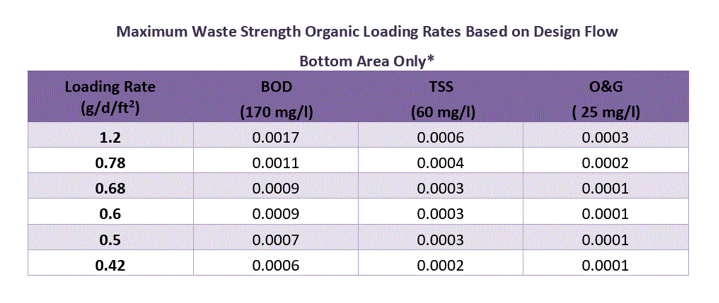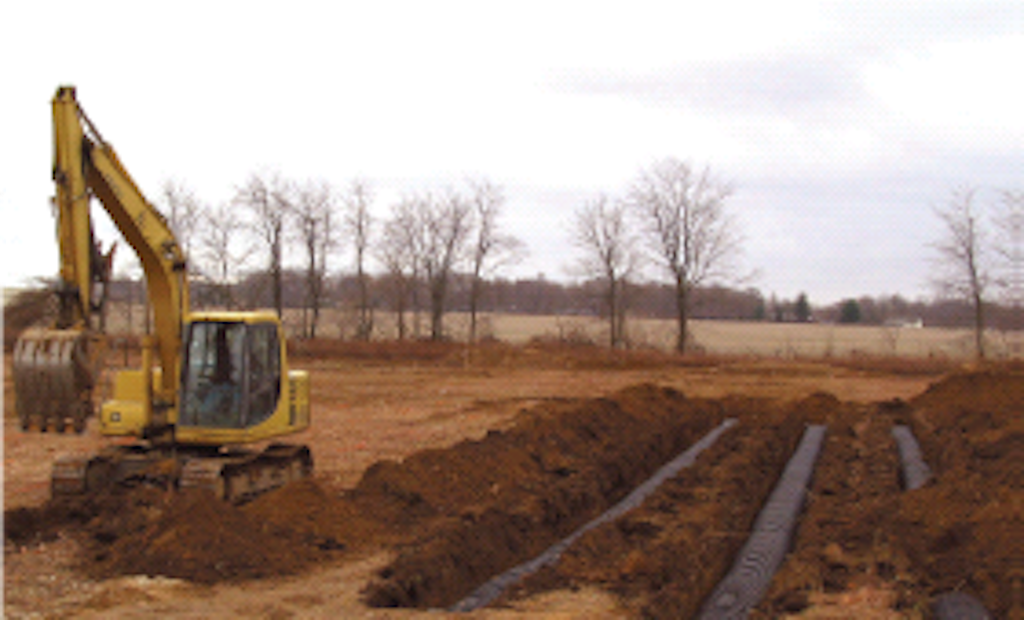Interested in Repair?
Get Repair articles, news and videos right in your inbox! Sign up now.
Repair + Get AlertsRegarding soil treatment systems and commercial system design, one of the biggest issues is failing to consider organic loading properly.
If we use the hydraulic loading rates from convention codes to find the required size of the dispersal component, there is a maximum organic loading rate. The concern with waste strength is not with environmental protection, but with soil treatment system longevity. If excessive organic material or solids reach the soil, the biological clogging mat can become restrictive to the point of hydraulic failure. In addition, excessive oil and grease can clog pipes.
The table below shows typical loading rates used across the U.S. with the organic loading rate from domestic septic tank effluent (BOD = 170 mg/L, TSS = 60 mg/L, O&G = 25mg/L).

The size of the absorption area should be based on the greater of the maximum hydraulic load or the maximum organic load. If the organic levels are elevated, pretreatment may be more economical than making the soil treatment area larger. The organic loading rate to the absorption area can be calculated as follows:
1. Determine pounds of contaminant to be treated per day:
___________ × ___________ × 0.00000834 = _______
Design flow (gpd) Conc. of contaminant (mg/L) Pounds of contaminant/day
2. Calculate required absorption area:
______________________ / _________________________ = ___________________
Pounds of contaminant/day Pounds of contaminant Ft2 of absorption area
(BOD, TSS, or O&G) ft2/day (from table above)
Other items to consider in commercial design are:
1. Oversize the absorption area by 50 percent and divide the system into three zones for dosing and resting cycles
2. Design the soil treatment system shallow, long and narrow to maximize oxygen transfer
3. Identify an area for a future advanced treatment unit and additional soil dispersal capacity
4. Use pressure distribution to minimize biomat formation:
a. To minimize plugging (particularly without pretreatment), larger orifice sizes and higher distal pressures will help prevent plugging; 1/4-inch perforations and a distal head of 5 feet are recommended
b. More frequent doses are preferable to spread out loading and allow for re-aeration. Be careful of “micro dosing” the soil dispersal system, as the dose volume needs to be large enough to fill laterals and provide a sufficient dose (typically three to five times the volume). Flow equalization over one-plus days will assist with the process as well.
c. Provide clean-outs on the distribution piping or flushing of tubing
.jpeg)
d. Provide an inspection port to the media/soil interface.
.jpeg)
About the author
Sara Heger, Ph.D., is an engineer, researcher and instructor in the Onsite Sewage Treatment Program in the Water Resources Center at the University of Minnesota. She presents at many local and national training events regarding the design, installation and management of septic systems and related research. Heger is education chair of the Minnesota Onsite Wastewater Association (MOWA) and the National Onsite Wastewater Recycling Association (NOWRA), and serves on the NSF International Committee on Wastewater Treatment Systems. Send her questions about septic system maintenance and operation by email to kim.peterson@colepublishing.com.
This article is part of a series on the design and maintenance of commercial septic systems:
- Commercial System Design: Wastewater Characterization
- Commercial System Design: Tank Considerations
- Commercial System Design: Organic and Nitrogen Removal
- Commercial System Design: The Soil Dispersal System
- Commercial System Design: Designing for Management






